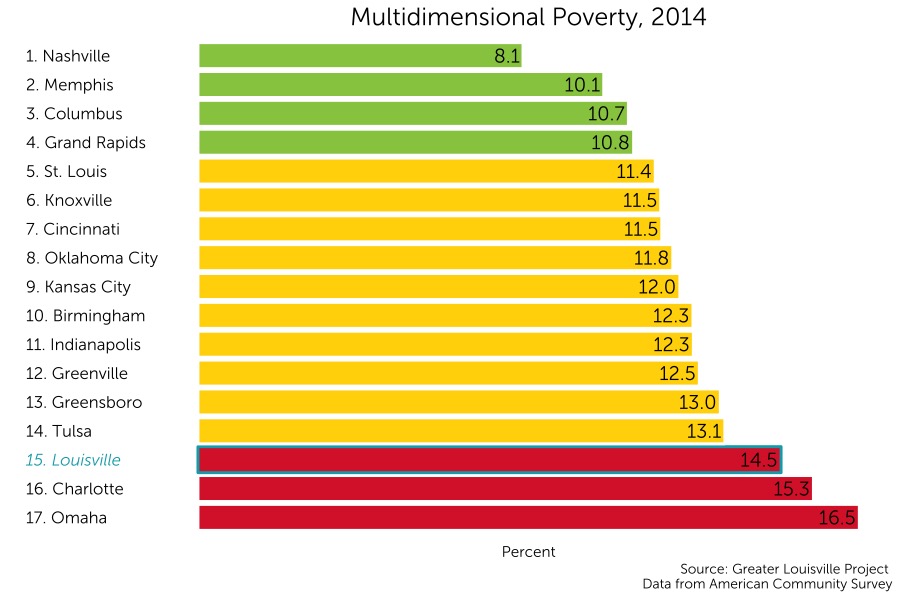Multidimensional Poverty
The effects of poverty are not just on the wallet, but in every barrier to health and wellbeing. The multidimensional poverty index reflects the fact that individuals experience poverty in multiple forms: low income, poorer health, unemployment, low education, and living in a poor neighborhood. These factors are not additive–each experienced factor multiplies the barriers to success for an individual in poverty. In order to address the complex issue of poverty, efforts to effect positive change must be coherent with the notion that poverty is caused by multiple, confounding factors.

